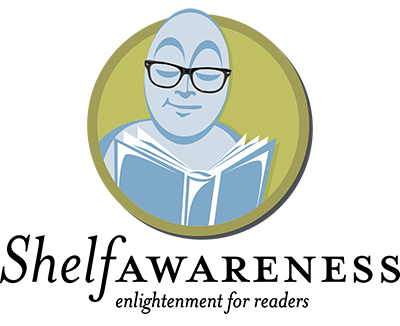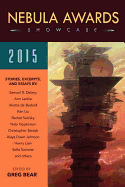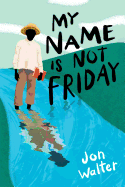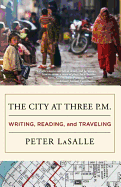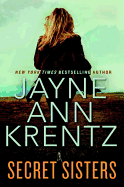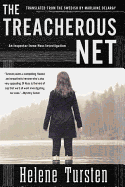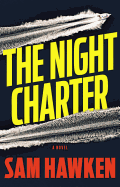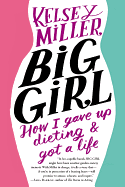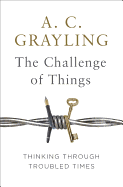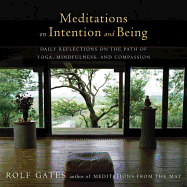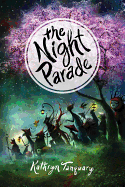Tuesday, January 5, 2016

"Bringing more everyday creativity into your life in 2016 is easier than you might think. Here are three simple (and enjoyable) suggestions to spark creativity at work and in life.
Make time for solitude: Alone time can be difficult to come by, but solitude is critical to the creative process; it's often in solitary reflection that we come up with our best ideas. Setting aside the time and space for quiet reflection fuels deep thought, creative problem-solving and innovation. Spend an afternoon on your own walking in nature or listening to music, and let your ideas flow freely.
Pick up a new hobby: Have you always wanted to sculpt or take up archery? Exploring a new activity can stimulate inspiration and help you to engage in new ways of thinking. It's the new and novel experiences in life that help us break out of habitual thought patterns and find new ways of seeing things. You never know--a Sunday afternoon class could be just what you need to get out of a creative rut.
Give meditation a try: Many artists and innovators have used meditation as a tool for tapping into their deepest creativity. Indeed, meditation has been shown to support a number of cognitive processes that play a key role in the creative process--memory, focus, emotional well-being and mental clarity--and research has suggested that certain types of meditation can directly enhance creative thinking. Plus, meditating for as little as 10 minutes a day could reduce stress and anxiety--two known creativity killers!" --Marilyn Dahl, editor, Shelf Awareness for Readers
Paradise City
by Elizabeth Day
In Paradise City, British novelist Elizabeth Day (Home Fires) traces the unexpected ways four characters' lives intersect in the bustle of contemporary London.
Beatrice Kizza is a refugee from Uganda, where homosexuality is illegal, haunted by her rape and the threat of jail when she was discovered with her lover by a family friend. Now a chambermaid in a high-end London hotel, she grieves for the lover she left behind. Self-made millionaire Howard Pink, whose teenage daughter disappeared 15 years earlier, tries to escape the pain of loss in the benign anonymity of his solitary hotel stays. Esme Reade, a young reporter at a London tabloid, angles for a career-making interview with Pink. Carol Hetherington, elderly and recently widowed, lives next door to a man who keeps devastating secrets. London is more than the backdrop to these four individuals' lives. This crowded and teeming city holds vastly different characters and is the beacon for their hopes and dreams.
Day is both sensitive and cuttingly astute in her depiction of her characters' struggles. The four are believable and vividly limned, Beatrice most of all. She may be on the margins of society, but she is consistently surprising in her reactions and observations. Paradise City is beautifully written and closely observed, but its strength lies in Day's compassion for her characters and her understanding that, beneath the surface, the strivers and the invisible, the glittering and the lonely, are people united by the universal need for acceptance and love. --Jeanette Zwart, freelance writer and reviewer
Discover: A lovely and compassionate novel about four characters from very different corners of London who find the possibility of hope and forgiveness when their lives converge.
Secret Sisters
by Jayne Ann Krentz
The drama of Jayne Ann Krentz's Secret Sisters begins on the very first page, when Madeline and Daphne, two young girls living at the Aurora Point Inn, on a small island in Washington State, witness a horrible crime. To protect the girls from repercussions, their families move away from Cooper Island, and the girls are separated for more than 18 years. But when Madeline's grandmother dies--under suspicious circumstances--and Madeline inherits the Aurora Point Inn, the girls, now grown women, are thrown back together to face the memories of their shared past and the very real threats that stalk them in their present. Accompanying them back to Cooper Island are two brothers who provide corporate security services for Madeline's company--one of whom turns out to be more than just a security man for Madeline.
There are times when the workings of Secret Sisters feel a little too convenient: a narrowly dodged threat, a convenient missed connection, a far-fetched love story. But Krentz balances this with an uncanny ability to keep readers guessing at every turn, revealing just enough of the mystery along the way to push toward a thrilling conclusion--albeit a rather neat and tidy one. Those who prefer their mysteries with a side of romance, a lot of questions to be answered and a (mostly) happy ending will delight in the rapid suspense of Secret Sisters. --Kerry McHugh, blogger at Entomology of a Bookworm
Discover: Jayne Ann Krentz delivers a fast-paced novel that is part mystery, part thriller and part romance.
Mystery & Thriller
The Treacherous Net
by Helene Tursten, transl. by Marlaine Delargy
The Treacherous Net is the eighth book in Helene Tursten's series starring Detective Inspector Irene Huss, who continues to be challenged by upheaval in her workplace and her personal life.
In the city of Göteborg, Sweden, Huss is frustrated with the new female boss of her Violent Crimes Unit, who uses her sex appeal to manage the men in her department; she has no use for Huss, the only other woman. Huss has lost her longtime partner, now the boss's deputy, and the unit is short-staffed and overextended by an unusually high crime rate. Gang-related murders are up, a mummified corpse has been found bricked into a chimney during demolition of a burned-out building, and two teenaged girls have been raped and murdered. One was from an affluent family who promptly reported her missing; the other had scarcely been missed. Meanwhile, Huss worries over her supportive but stressed and overworked husband, her aging mother and her young adult daughters, now out on their own. A new addition to her work team will ease some of the load--and present new challenges.
Huss is a tough, committed investigator and a loving family woman, and her shifting alliances present a twist on the standard police drama. Several of the actors involved with the crimes in question are well-developed characters as well. But The Treacherous Net is most accomplished in its plot, with several threads exploring history, long-standing social stigmas and the power of the Internet. This fast-paced, gritty thriller offers both a dark story and a striking hero. --Julia Jenkins, librarian and blogger at pagesofjulia
Discover: Detective Inspector Huss works to protect a Swedish city beset by multiple violent crimes.
The Night Charter
by Sam Hawken
Sam Hawken, Dagger Award nominee for his Mexican-American border crime novels (Tequila Sunset, Missing), relocates his Latino savvy and violence-laden prose to the warehouses, seedy motels and working marinas of a Cuba-centric Miami. Resurrecting a character from earlier novellas, The Night Charter features Camaro Espinoza--a rugged single woman who drives a Harley and runs her own 50-foot Custom Carolina charter boat on night trips to the Gulf Stream. Camaro (so named by her father who loved Detroit iron) has a history. When her life or her boat is at risk, she saddles up with a boot-stuffed karambit knife and her Glock 38 "chambered in .45 GAP with a single stack of eight rounds." But mostly, she now just wants time to herself and "to keep it simple, that's all. Boat. Water. Fish."
Detached and simple, though, fly out the window when she goes soft for the down-on-his-luck ex-con Parker Story, who needs to repay a sadistic prison cellmate who "protected" him. The deal involves making a clandestine run to Cuba to bring to Miami an underground anti-Castro insurgent wanted by Cuba's Intelligence Directorate. Miami's 1960s paramilitary freedom fighter group Alpha 66 also wants him--for fund-raising. The trip goes wrong when the passenger gets kidnapped, the shooting starts and the Miami P.D. and FBI come knocking. Good-hearted Camaro has to sort it out with her wits, guts and arsenal. In short, staccato chapters, Hawken adds an accomplished new voice to the South Florida crime library. --Bruce Jacobs, founding partner, Watermark Books & Cafe, Wichita, Kan.
Discover: Sam Hawken's latest novel puts charter boat captain Camaro Espinoza in the middle of violent Cuban politics and Miami cops and robbers.
Science Fiction & Fantasy
Nebula Awards Showcase 2015
by Greg Bear, editor
Every year, the members of the Science Fiction and Fantasy Writers of America vote on the best stories from that year; an anthology is then edited, featuring the nominated short stories and novelettes, as well as excerpts from the longer works. The Nebula Awards Showcase 2015 begins with an introduction from editor Greg Bear, followed by the contenders for each category on the Nebula ballot. Short story winner "If You Were a Dinosaur, My Love," by Rachel Swirsky, is a veritable kick in the heart. It leads the way by thematic example through the rest of the nominees and winners, including the amazing novel Ancillary Justice by Ann Leckie.
The stories reflect a wistful, longing, poignant view of what it means to be human. The mother in "Alive, Alive Oh" by Sylvia Spruck Wrigley is trapped on a toxic planet, far from Earth, never allowed to return. She must hide her own grief to help raise a daughter who is perhaps a little too fearless. "In Joy, Knowing the Abyss Behind," a novelette finalist by Sarah Pinsker, fairly oozes loss and a considerable amount of bittersweet melancholy when an old woman discovers the truth her husband of decades has been hiding from his family to keep them safe.
This is a fantastic selection of stories that represent the best of the genre by writers both new and old--each a master of the craft. --Rob LeFebvre, freelance writer and editor
Discover: A tour of the year's best writing in the genre chosen by working science fiction and fantasy authors.
Biography & Memoir
Big Girl: How I Gave Up Dieting and Got a Life
by Kelsey Miller
On the surface, Big Girl is a memoir about one woman's attempts to work through her problems with food and come to terms with a painful childhood. However, Refinery29 writer Kelsey Miller is so funny and likable that spending time with her as she explores the world of "Intuitive Eating"--a body image program based on Evelyn Tribole and Elyse Resch's book--is joyful rather than sad. Intuitive Eating requires mindfulness (allowing no other distractions), which becomes a gateway to mindful living in a hectic world: "Mindfulness was sneaking off of the plate and into the rest of my life.... [And] now I realize [food] was just one particularly cheap and sticky strain of my real drug of choice: distraction." As Miller learns to eat without disruption, she realizes this is how she should approach all aspects of her life--fully invested in the present moment and at peace with the mental chatter that sometimes fills the silence.
In an author's note, Miller describes Big Girl as "a snapshot of a wild, precious year of my life," but this memoir is so much more than that. From the first sentence--when Kelsey addresses the reader directly: "I'm not special. Not that you thought I was..."--we realize that she is indeed special, and Big Girl is truly a gift to every reader, regardless of any existing "food issues." Miller becomes a trusted friend--to herself, as well as the reader. --Kristen Galles from Book Club Classics
Discover: With body image, says author Kelsey Miller, "aiming for 'perfect' is nothing short of bananapants. 'Real' is the best you can shoot for."
Philosophy
The Challenge of Things: Thinking Through Troubled Times
by A.C. Grayling
This collection of brief, provocative essays by A.C. Grayling (The Good Book; The God Argument) continues his case for philosophy's contribution to the public conversation about real-world questions. As Grayling describes in his introduction, the essays are "a miscellany unified by the effort to... explore, and to suggest perspectives upon, different facets of this time in our world." Written in the shadow of the wars in Iraq and Afghanistan, they extend his arguments to geopolitics and societal changes sweeping the globe.
The first essay criticizes the label "The Great War" for World War I as being misleading, tidying our perceptions of the war and understating both its ongoing impact and its relative scale. It's an important point, but Grayling then turns the essay into a surprising defense of the study of history. He is transparent about his ideological leanings and can be scathing to reinforce his point: in his essay on the modernizing of the Chinese economy and its practice of "re-education through labour," he comments, "How membership of the World Trade Organisation was given to a country whose economy benefits from slave labour on such a scale would be a mystery if morality ever played a part in monetary considerations."
He analyzes the bedrock necessity of free speech and when it should be limited, the paradoxes of sleep and whether success can be defined by what we achieve. Each essay is a jewel. Taken together, they provide a spirited defense of the importance of philosophy and the humanities in general while calling us to rethink some of our most fundamental assumptions. --Jeanette Zwart, freelance writer and reviewer
Discover: A philosopher dissects the conflicts and promise of our changing world with these brief, elegant inquiries.
Body, Mind & Spirit
Meditations on Intention and Being: Daily Reflections on the Path of Yoga, Mindfulness, and Compassion
by Rolf Gates
While Rolf Gates's previous work, Meditations from the Mat, was about taking lessons learned from the yoga mat into the world, Meditations on Intention and Being hopes to "provide readers with an ancient set of instructions for how to live and love well today... [using] the life we are living, [and] the gifts we've been given, [to] create happiness and freedom." His meditations address how to do so by embracing wisdom and compassion rather than fear and anger--and by turning "the purity of our heart's intention into an authentic way of being."
Meditations on Intention and Being opens with a list of three practices (to bolster intention, heart and being) and provides concrete steps for each. For example, the practice of intention involves writing down a heart's desire, reflecting on this desire often, and then choosing "faith and flow over fear and control." Gates then shares his personal journey with adoption, athletics, the military and addiction, as well as finding a vocation and forming a family, to inform his yogic path and help readers do the same. But the heart of the book involves daily musings that focus on effortlessness, nonviolence, mindfulness, loving-kindness, compassion, joy and equanimity. The goal is to "see things as they are" and then "skillfully respond to life's pain and seeming imperfections." Meditations on Intention and Being would be a welcome resource for the year, providing 365 gentle reflections on how to live with intention, every day. --Kristen Galles from Book Club Classics
Discover: A year's worth of reflections from yoga practice that enhance daily living.
Science
We Have the Technology: How Biohackers, Foodies, Physicians, and Scientists Are Transforming Human Perception, One Sense at a Time
by Kara Platoni
Can you taste calcium just as you taste sweet and salt? Could we make a robotic hand that can feel the warmth of human skin? Can individual cells tell time? How do our senses affect how we remember and learn? In her first book, We Have the Technology, journalist Kara Platoni explores the colorful, fast-developing world of sensory science with engaging clarity and wit. For one year, she traveled to interview--and experience the work of--researchers who use technology and training to expand understanding of the senses and restore damaged sensory abilities or create new ones. There is no such thing as objective reality, she writes; our brains constantly filter and edit our experiences, and imagine what isn't there. We limit ourselves further by perceiving only "what we have learned to pay attention to--through words, through cultural associations, through personal memories." But the brain will also "learn to read whatever we can learn to write in."
Platoni visits a man with a bionic eye, and a French group that treats memory loss with fragrances. One lab examines the neurological similarities between physical and emotional pain, another creates pictures from thoughts. She learns how virtual reality can teach her to operate a third arm or empathize with a cow. Amateur "biohackers" augment their bodies with wearable gadgets or modify them with electronic and magnetic implants, eager to "Frankenstein themselves a new sensory experience." These experiments have intriguing implications for the future, at least for a privileged few. "Nature is amazing, say the biohackers.... Couldn't it be more so?" --Sara Catterall
Discover: An examination of how the creative world of sensory science is changing our understanding and perceptions of reality.
Travel Literature
The City at Three P.M.: Writing, Reading, and Traveling
by Peter LaSalle
Blending literary criticism and travel writing, the offbeat essays that compose University of Texas creative writing professor and novelist Peter LaSalle's collection The City at Three P.M.: Writing, Reading and Traveling range across space and time to form an engaging portrait of his fertile mind's encounters with the world.
A representative LaSalle essay finds him strolling the streets of a city, seeking out settings or landmarks that will connect him to the work of his favorite writers like Jorge Luis Borges (Buenos Aires), Nathanael West (Los Angeles) or Gustave Flaubert (Tunisia, the modern locale for his novel of ancient Carthage, Salammbô). His visit to the library where Borges worked for nine years, for example, gives him a new appreciation of "the craft and vision of what he did in those fully innovative, dazzling short stories." When he encounters a restless crowd across the street from the Chinese Theatre on Hollywood Boulevard, it conjures up for him the "wild and near apocalyptic" climactic scene of West's The Day of the Locust. LaSalle (Mariposa's Song) is never less than passionate about his attachment to his favorite books, admitting that he's been "close to obsessed with" Malcolm Lowry's Under the Volcano "for nearly my whole adult life."
As is the case with his physical journeys, LaSalle doesn't hesitate to stray from the main roads when sharing his literary tastes, but he does so without becoming pedantic. On the page, his words leave the distinct impression that he'd be a fascinating traveling companion in real life. --Harvey Freedenberg, attorney and freelance reviewer
Discover: The nine essays in this collection effortlessly blend astute literary criticism and observant travel writing.
Children's & Young Adult
My Name Is Not Friday
by Jon Walter
British author Jon Walter (Close to the Wind) skillfully tells a thoroughly riveting, elegantly nuanced story of an orphan sold into slavery in the Civil War South.
My Name Is Not Friday grew from Walter's vision of "a boy, alone in darkness, thinking he'd been taken by God." That would be 12-year-old Samuel Jenkins, a freeborn black boy in Mississippi who's been hauled off from Father Mosely's orphanage (with a musky rabbit-hunting sack over his head) by a licorice-breathed slave dealer. Normally it's the "bad boys" like his little brother Joshua who are sold off first, but Samuel is a studious, deeply devout boy who tries his hardest to be good. His hasty decision to shoulder the blame for something he's sure his brother did changes his life forever. Samuel is renamed "Friday" and sold for $600.
When Samuel arrives at the cotton plantation, he tries to explain the mix-up to the foreman--he's a freeborn black, not a slave--and he is promptly whipped. Adjusting to life of cotton-picking, and hiding his true identity and education, takes some doing, but he forges relationships with his fellow slaves and with the plantation owner's lonely 12-year-old son, Gerald, who desperately wants to be his friend. Walter explores the "multiplicity of truths" of Civil War history, including many who try to rationalize their role in the dehumanizing practice of slavery, such as those who believe "the two races working together for the good of both" is God's intention.
Teen readers will be cheering for Samuel in this insightful, hopeful, gut-wrenching and truly fine novel. --Karin Snelson, children's & YA editor, Shelf Awareness
Discover: This engaging teen novel tells the tale of 12-year-old Samuel Jenkins who is sold into slavery in Mississippi during the Civil War.
The Night Parade
by Kathryn Tanquary
In a suspenseful middle-grade fantasy debut evocative of Neil Gaiman's Coraline and classic films like Hayao Miyazaki's Spirited Away, Kathryn Tanquary drops a peer-pressure-prone Japanese teenager into the realm of the fantastic.
For 13-year-old Saki Yamamoto, a family summer vacation in her grandmother's remote mountain village means missing her friends back home in Tokyo... and worst of all, no cell signal. But Saki never gets the chance to be bored. She soon meets a group of "delinquent village kids" who dare Saki to ring a sacred bell at her family's ancestral graveyard shrine at night. "A death curse, her fears whispered," but Saki rings the bell anyway. Later that night, she awakens to the presence of a four-tailed fox spirit guide who tells her that, sure enough, a death curse now hangs over her family. To find someone who can combat the curse, Saki must walk in the Night Parade of spirits, or Hyakki Yagyō. She is afraid, but "[t]he forest was awake with sounds, alive and eager. It called to her, drawing her closer to the door." Over the course of three nights, Saki faces ogres, shrine guardians, a deceptively kind witch with a faceless son and many other typical denizens of Japanese mythology. Saki learns the hard way to give family and tradition their due. The magic in these lessons, however, outweighs any didacticism.
Expect this solid fantasy for tween readers to inspire interest in myth, magic and--quite likely--manga. --Jaclyn Fulwood, youth services librarian, Latah County Library District (Idaho)
Discover: A Tokyo middle-schooler gets caught up in the dangerous Japanese spirit world when her family spends the summer in her grandmother's rural village.

